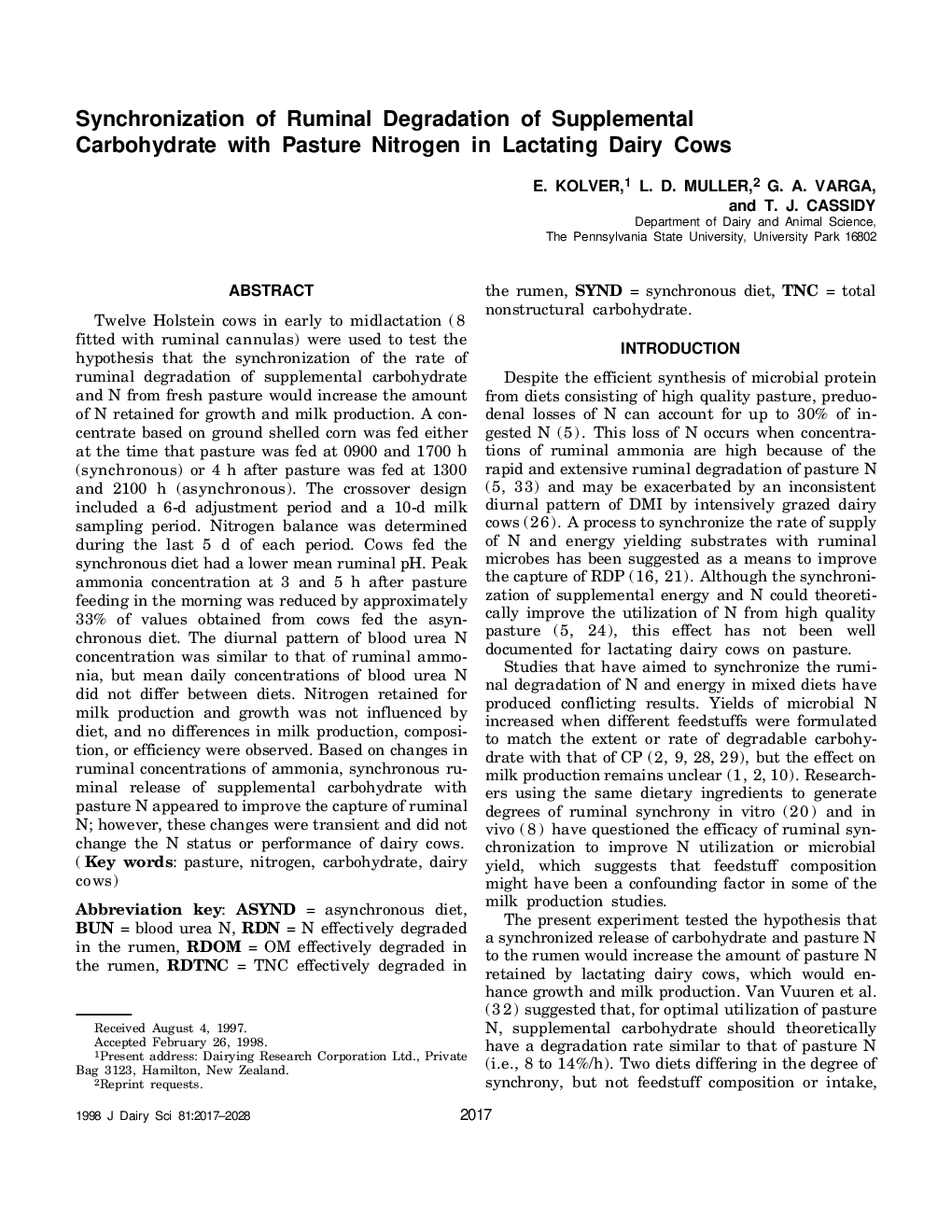| Article ID | Journal | Published Year | Pages | File Type |
|---|---|---|---|---|
| 2442661 | Journal of Dairy Science | 2017 | 12 Pages |
Twelve Holstein cows in early to midlactation (8 fitted with ruminal cannulas) were used to test the hypothesis that the synchronization of the rate of ruminal degradation of supplemental carbohydrate and N from fresh pasture would increase the amount of N retained for growth and milk production. A concentrate based on ground shelled corn was fed either at the time that pasture was fed at 0900 and 1700 h (synchronous) or 4 h after pasture was fed at 1300 and 2100 h (asynchronous). The crossover design included a 6-d adjustment period and a 10-d milk sampling period. Nitrogen balance was determined during the last 5 d of each period. Cows fed the synchronous diet had a lower mean ruminal pH. Peak ammonia concentration at 3 and 5 h after pasture feeding in the morning was reduced by approximately 33% of values obtained from cows fed the asynchronous diet. The diurnal pattern of blood urea N concentration was similar to that of ruminal ammonia, but mean daily concentrations of blood urea N did not differ between diets. Nitrogen retained for milk production and growth was not influenced by diet, and no differences in milk production, composition, or efficiency were observed. Based on changes in ruminal concentrations of ammonia, synchronous ruminal release of supplemental carbohydrate with pasture N appeared to improve the capture of ruminal N; however, these changes were transient and did not change the N status or performance of dairy cows.
